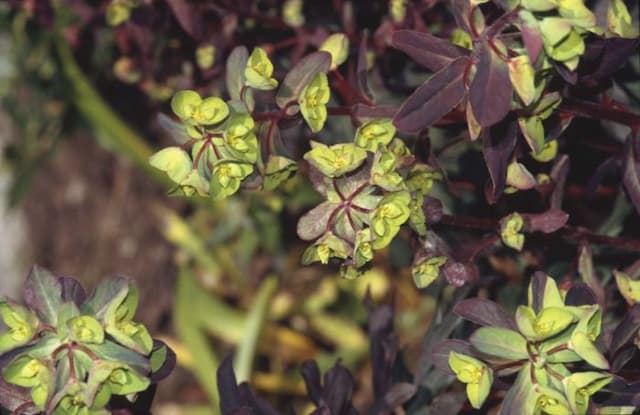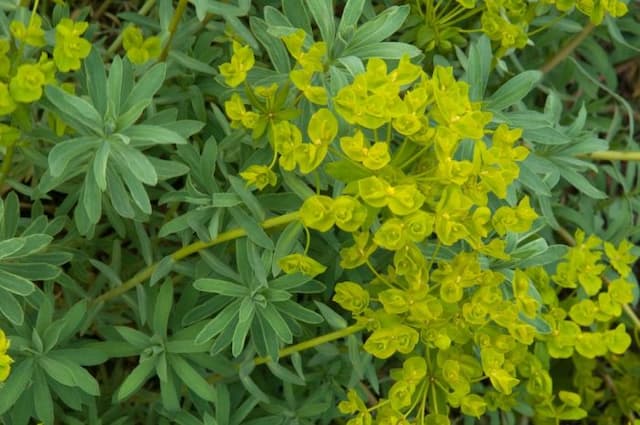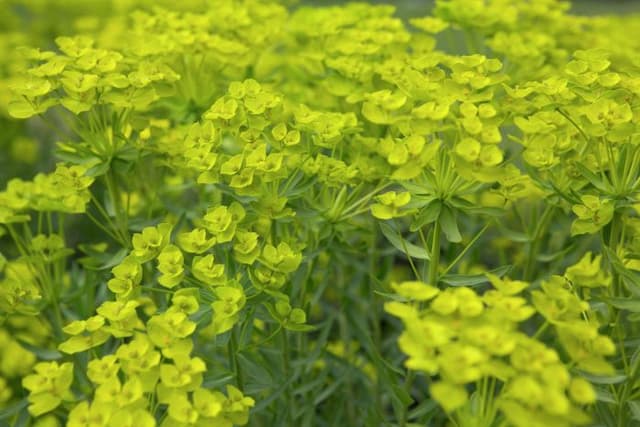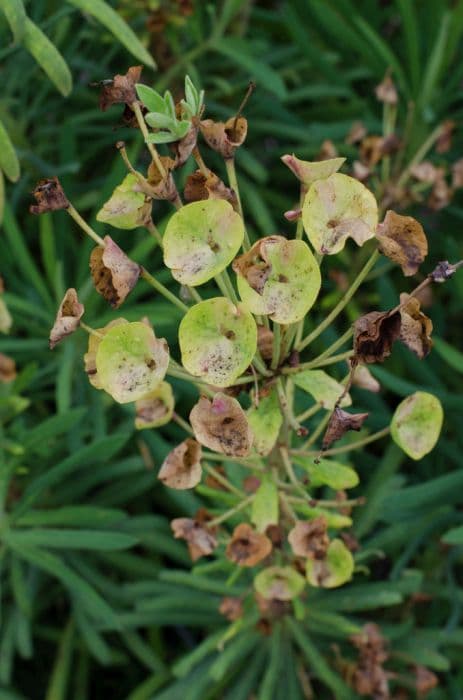Poinsettia Euphorbia pulcherrima 'Ice Punch' (PBR)

ABOUT
Ice Punch is a striking variety of the well-known Christmas plant known for its vibrant and festive appearance. This plant features large, flat leaves that are a deep, glossy green. The most distinctive feature of this plant is its striking bracts, which are modified leaves that look like petals; they are typically bright red, but in Ice Punch, they have a unique pattern. These bracts are creamy white in the center and gradually turn to shades of electric pink and red towards the edges, giving the impression of a cool, frosty center being warmed by the surrounding holiday colors. The flowers of this plant, which are less noticeable, are small, yellowish-green, and clustered at the center of the bracts. Over time, the bracts retain their color well into the winter season, creating a long-lasting decorative display. Overall, its vibrant contrast and pattern make Ice Punch an eye-catching addition to seasonal decor.
About this plant
 Names
NamesFamily
Euphorbiaceae
Synonyms
Poinsettia, Christmas Flower, Christmas Star, Winter Rose, Mexican Flameleaf, Noche Buena, Lobster Plant, Flame Leaf
Common names
Euphorbia pulcherrima 'Ice Punch' (PBR)
 Toxicity
ToxicityTo humans
The most common name for Euphorbia pulcherrima 'Ice Punch' is Poinsettia. Poinsettias are often considered toxic to humans, but they are usually not very harmful. The plant can cause irritation if ingested, with symptoms like nausea, vomiting, or diarrhea. The sap of the poinsettia can also cause skin irritation or an allergic reaction in some individuals. Therefore, while ingesting poinsettias is not typically life-threatening, it can cause discomfort and should be avoided.
To pets
Poinsettia, the common name for Euphorbia pulcherrima 'Ice Punch', is mildly toxic to pets such as dogs and cats. If ingested by pets, the plant can cause nausea, vomiting, or diarrhea due to the presence of a milky, white, sap-like substance known as latex. This substance can also irritate the mouth and stomach. Although the toxicity is generally considered mild, it's advisable to keep poinsettias out of reach of pets to prevent gastrointestinal upset.
 Characteristics
CharacteristicsLife cycle
Perennials
Foliage type
Evergreen
Color of leaves
Green
Flower color
Mixed
Height
1-3 feet (0.3-0.9 meters)
Spread
1-3 feet (0.3-0.9 meters)
Plant type
Shrub
Hardiness zones
9
Native area
Mexico
Benefits
 General Benefits
General Benefits- Ornamental Appeal: Euphorbia pulcherrima 'Ice Punch' Poinsettia features distinctive red and white variegated leaves, providing a unique and eye-catching display during the holiday season.
- Seasonal Festivity: Poinsettias are synonymous with Christmas, helping to create a festive atmosphere in homes, offices, and public spaces.
- Easy to Grow: Poinsettias are relatively easy to care for, making them suitable for gardeners of all skill levels.
- Long-Lasting Color: With proper care, Poinsettias can maintain their vibrant color well beyond the holiday season, sometimes even lasting until spring.
- Versatile Decor: Poinsettias can be used in various decorative arrangements, from table centerpieces to holiday wreaths.
- Improves Mood: The bright and cheerful colors of the Poinsettia can help to lift spirits and improve overall mood during the winter months.
 Medical Properties
Medical PropertiesThis plant is not used for medical purposes.
 Air-purifying Qualities
Air-purifying QualitiesThis plant is not specifically known for air purifying qualities.
 Other Uses
Other Uses- Euphorbia pulcherrima 'Ice Punch' (Poinsettia) can be used as a natural dye for fabrics, offering a range of colors from green to yellow depending on the part of the plant used.
- Poinsettias are sometimes used in handcrafted paper making, where the leaves can be incorporated into the pulp to create decorative patterns.
- The milky sap of Poinsettias has been used as a depilatory, removing hair when applied topically, although it can cause skin irritation in some individuals.
- Poinsettias can be used as a model organism in botanical and horticultural studies to understand the mechanism of photoperiodism, the biological response to the timing and duration of light and dark periods.
- The vibrant bracts of the Poinsettia can be used in ornaments and crafts, such as making festive wreaths and holiday decorations.
- Poinsettias, when used as part of a living mulch system, can help improve soil quality and suppress weeds when they decompose.
- When not in bloom, poinsettia plants can be used as green foliage in interior landscaping for large spaces like malls and corporate buildings.
- The striking appearance of Poinsettias can serve as a teaching tool for botany education, demonstrating leaf modification as their red 'petals' are actually colored bracts.
- Poinsettia installations can be used as living art exhibits during the holiday season, attracting visitors and enhancing public spaces with their festive appeal.
- Poinsettias can be juiced to create a natural pigment for artistic painting, although care must be taken due to its toxicity if ingested.
Interesting Facts
 Feng Shui
Feng ShuiThe Poinsettia is not used in Feng Shui practice.
 Zodiac Sign Compitability
Zodiac Sign CompitabilityThe Poinsettia is not used in astrology practice.
 Plant Symbolism
Plant Symbolism- Celebration: Euphorbia pulcherrima 'Ice Punch' (PBR), also known as Poinsettia, is widely used in festive decorations, especially during the Christmas season, symbolizing celebration and joy.
- Success and Good Cheer: The vibrant and lively colors of the Poinsettia are often associated with success and positive energy, bringing good cheer to any setting.
- Star of Bethlehem: The shape of the Poinsettia flower is said to represent the Star of Bethlehem which led the Wise Men to Jesus, making it a symbol of the Christmas story and hope.
- Good Luck: In some cultures, Poinsettias are given as gifts during the winter holidays as a symbol of good luck for the upcoming year.
 Water
WaterPoinsettias, the common name for Euphorbia pulcherrima 'Ice Punch', prefer the soil to be kept moist but not waterlogged. Water the plant thoroughly when the top inch of soil feels dry to the touch, which typically amounts to once a week. However, the frequency can vary depending on factors like temperature and humidity. When watering, use lukewarm water and aim to provide between 16 to 24 ounces each time for a standard size potted plant. Avoid letting the plant stand in water, as this can lead to root rot.
 Light
LightPoinsettias thrive in bright, indirect light. Place them near a sunny window where they can receive plenty of light without being exposed to harsh direct sunlight, especially during the midday hours when the light can be too intense. An east-facing window is often ideal as it provides morning light that is less likely to scorch the leaves.
 Temperature
TemperaturePoinsettias prefer a temperature range between 65 to 70 degrees Fahrenheit during the day and should not be exposed to temperatures below 50 degrees Fahrenheit, as they are sensitive to cold drafts. The ideal nighttime temperature is between 60 to 65 degrees Fahrenheit. Keep the plant away from cold windows, doors, and air vents to maintain a consistent temperature.
 Pruning
PruningPrune poinsettias to maintain their shape and encourage bushy growth. The best time to prune is in the spring or early summer after the blooming season has ended. Cut back the stems to about 4 to 6 inches in height, leaving one to three leaves on each remaining stem. Pruning can be done annually and is crucial for stimulating new growth and preparing the plant for the next blooming cycle.
 Cleaning
CleaningAs needed
 Soil
SoilFor the Poinsettia 'Ice Punch', use a well-draining potting mix with peat moss, perlite, and vermiculite. The ideal soil pH should be between 5.5 and 7.0.
 Repotting
RepottingPoinsettias, such as the 'Ice Punch', should be repotted every 2 years or when they outgrow their current pot.
 Humidity & Misting
Humidity & MistingPoinsettias like 'Ice Punch' thrive best at moderate humidity levels, ideally ranging from 40-60%.
 Suitable locations
Suitable locationsIndoor
Keep Poinsettia 'Ice Punch' near bright, indirect light and away from drafts.
Outdoor
Plant Poinsettia 'Ice Punch' in filtered sunlight and sheltered location.
Hardiness zone
9-11 USDA.
 Life cycle
Life cycleThe life cycle of the Euphorbia pulcherrima 'Ice Punch' (commonly known as Poinsettia) begins with germination, where the plant emerges from seeds under appropriate warmth and moisture conditions. The seedling stage follows, where it develops its first leaves and a root system. As it matures into a young plant, it enters the vegetative growth phase, developing a stronger root system and fuller foliage. During this period, proper light, water, and nutrition are crucial for healthy growth. The plant eventually reaches the flowering stage, often induced by shorter daylight hours, producing the characteristic red and green foliage that is actually modified leaves called bracts surrounding the small flowers. After pollination and seed formation, the plant enters a period of senescence, completing its life cycle, although Poinsettias are often cultivated as annuals in cooler climates.
 Propogation
PropogationPropogation time
Late Winter - Early Spring
The plant commonly known as Poinsettia 'Ice Punch' can be propagated through cuttings, which is the most popular and effective method. The ideal time for taking cuttings is in late spring or early summer when the plant is actively growing. To propagate, a 4 to 6-inch cutting should be taken from a healthy, mature plant, making sure that it includes a few leaves. It is important to allow the latex, a milky white sap typical of Euphorbias, to dry before planting the cuttings to prevent rot. Once the latex has dried, which usually takes a few hours, the cutting is dipped in a rooting hormone to increase the chances of successful rooting and then planted in a well-draining soil mixture. The cutting must be kept moist and placed in indirect light until roots develop, which typically takes around 3 to 4 weeks. After rooting, the poinsettia cutting can be transplanted into a larger pot and cared for like a mature plant.









